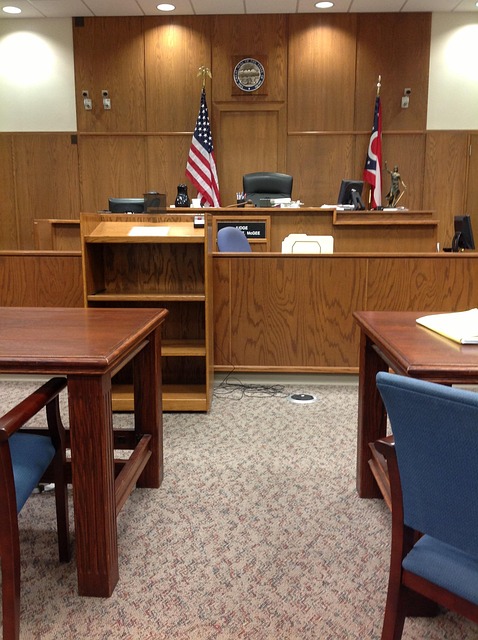Environmental Crime Trials highlight the stark contrasts in sentencing between state and federal jurisdictions, with federal courts imposing stricter penalties for national-scale offenses while state trials focus on local impacts. These differences significantly impact legal strategies for defense attorneys, particularly for white-collar clients, as they navigate varied fines, prison terms, and restorative justice approaches at play across different levels of government. Understanding these jurisdictional nuances is vital to achieving favorable outcomes in environmental cases.
“Environmental Crime Trials: Uncovering the Complexities of Justice explores the intricate world of environmental legal proceedings. This comprehensive piece delves into the unique challenges posed by these cases, particularly when navigating state vs. federal jurisdiction. We analyze how these jurisdictions differ in their approach to prosecution and sentencing, highlighting the significant implications for offenders. By examining key differences between state and federal sentencing procedures, this article provides a critical overview, offering insights into the evolving landscape of environmental justice.”
- Understanding Environmental Crime Trials: A Comprehensive Overview
- State vs. Federal Jurisdiction: Implications for Environmental Offenders
- Key Differences in Sentencing: An Analysis of Penalties and Procedures
Understanding Environmental Crime Trials: A Comprehensive Overview

Environmental Crime Trials delve into complex legal issues, particularly when navigating the differences between state and federal sentencing. These trials are designed to hold individuals and corporations accountable for violations related to environmental regulations. Understanding the intricacies of such cases is crucial for general criminal defense attorneys representing clients at all stages of the investigative and enforcement process.
The nuances lie in the varying approaches to punishment and rehabilitation. Federal courts often impose stricter penalties, reflecting a commitment to national environmental standards. In contrast, state-level trials may prioritize local impacts and community involvement, leading to diverse sentencing outcomes. This disparity underscores the importance of adapting legal strategies to align with the specific jurisdiction, ensuring the best possible outcome for his clients.
State vs. Federal Jurisdiction: Implications for Environmental Offenders

The jurisdiction over environmental crimes can significantly impact the outcome for offenders, with distinct differences between state and federal levels. In many countries, environmental regulations are primarily enforced at the state level, allowing local prosecutors to handle cases involving pollution, waste management, and other ecological transgressions. This decentralized approach empowers states to tailor their legal strategies according to regional needs and priorities. However, the involvement of federal authorities adds a layer of complexity. Federal jurisdiction is typically invoked for larger-scale, interstate environmental offenses, such as major pollution incidents or the illegal trafficking of endangered species across state lines.
When facing federal charges, corporate and individual clients alike must consider the potential consequences, which often carry more severe sentences compared to state-level convictions. The differences between state and federal sentencing can be substantial, especially in terms of fines and prison terms. A successful general criminal defense strategy might involve understanding these jurisdictional nuances and exploring ways to avoid indictment, particularly for less serious infractions that could be better addressed at the state level.
Key Differences in Sentencing: An Analysis of Penalties and Procedures

In environmental crime trials, one of the most striking aspects is the stark contrast in sentencing between state and federal jurisdictions. These differences stem from varied legal frameworks and priorities, reflecting broader societal attitudes towards environmental protection. At the federal level, penalties tend to be more severe, often involving substantial fines and lengthy prison sentences. This is due to the perceived gravity of transnational impacts and the need for uniform, robust deterrents against large-scale ecological offenses. In contrast, state-level sentencing practices vary widely, with some states adopting more lenient approaches focused on restorative justice and community service.
The disparities extend beyond punishment; federal cases often navigate complex procedural paths, leveraging extensive investigative resources and intricate enforcement mechanisms from agencies like the Environmental Protection Agency (EPA). This is in stark contrast to state-level proceedings, which may face resource constraints and focus more on local environmental advocacy groups and citizen participation throughout all stages of the investigative and enforcement process. These differences play a crucial role in shaping legal strategies for both corporate and individual clients involved in white collar defense, with implications for how they are represented and the potential outcomes of their cases.
Environmental crime trials play a pivotal role in holding offenders accountable for their actions that harm our planet. By examining the nuances of jurisdiction, sentencing procedures, and penalties, we uncover critical differences between state and federal systems. Understanding these distinctions is essential for navigating environmental legal landscapes, ensuring just outcomes, and fostering effective conservation efforts. The analysis highlights the need for a comprehensive approach to address environmental crimes, where both local and national authorities work in harmony to protect our shared natural resources.






